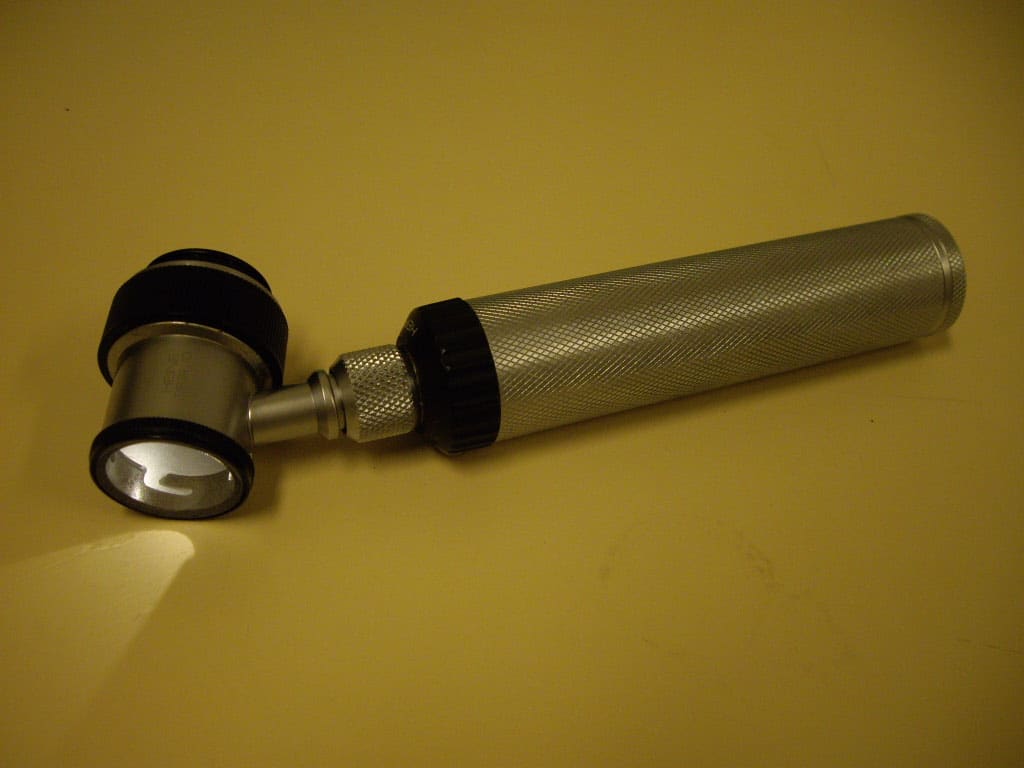Hair miniaturization is the conversion of thick, pigmented terminal hair into short, fine and hypopigmented vellus-like hair (peach fuzz).
The process is symptomatic of various types of hair loss, which can be temporary or permanent. So, hair miniaturization isn’t always irreversible.
One thing to remember is that early treatment is key when it comes to reversing the damage caused by hair miniaturization. The longer you wait to get advice and start treatment, the less your doctors can do.
In this guide, you’ll find out everything that you need to know about this hair-thinning process.
What Is Hair Miniaturization?
Hair miniaturization refers to the shrinking of the hair follicles on the scalp. Most commonly, it’s seen in androgenetic alopecia, where it results in permanent baldness.
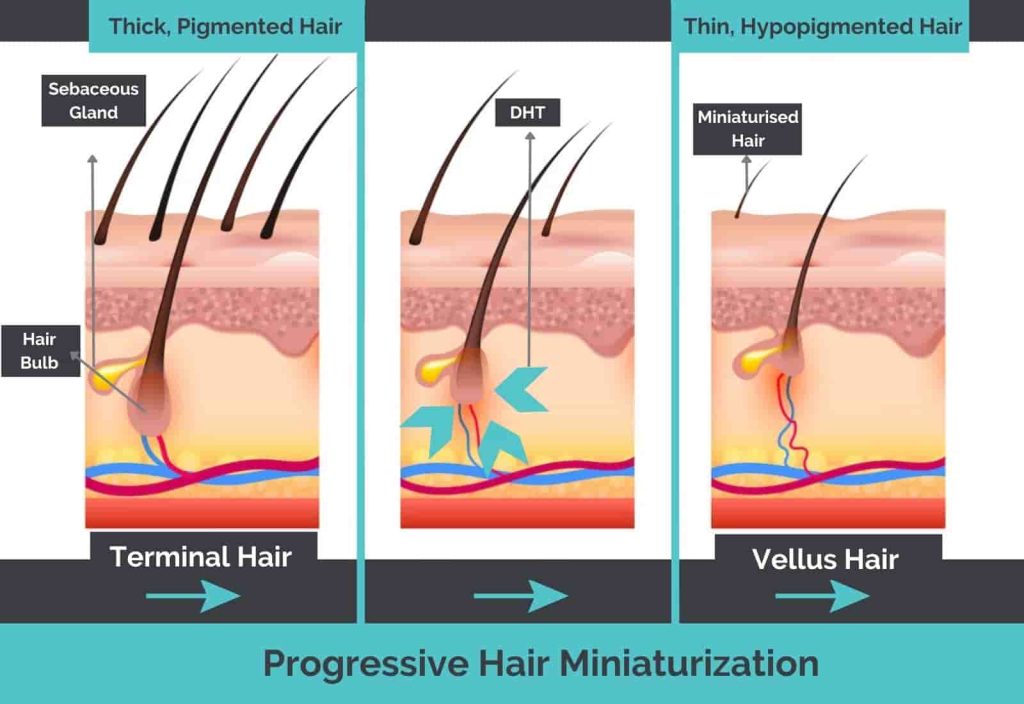
Research shows that dihydrotestosterone (DHT) – a byproduct of testosterone – is responsible for this process. It’s because of the higher activity of the enzyme 5-alpha reductase in the dermal papilla cells.

This enzyme converts testosterone into DHT, which then binds to the androgen receptors (located in dermal papilla cells). That, in turn, modifies the hair growth cycle. The anagen (growing) phase is reduced to a few weeks or months instead of 2-8 years.
Additionally, hair follicles go into a period of “true rest” for a few months to a year. This is known as the kenogen phase. And according to research published in Skin Appendage Disorders, in patients with androgenetic alopecia, the number and duration of kenogen hair are higher.
Previously, it was believed that hair miniaturization occurred over a number of hair cycles for a long period of time. However, research has shown that it occurs abruptly as a large-step process in just one hair cycle.
What Causes Hair Miniaturization?
Dihydrotestosterone influences hair miniaturization in androgenetic alopecia. However, there are other theories that also explain why it happens.
According to research published in the International Journal of Trichology, the arrector pili muscle (APM) plays an important role in this regard.
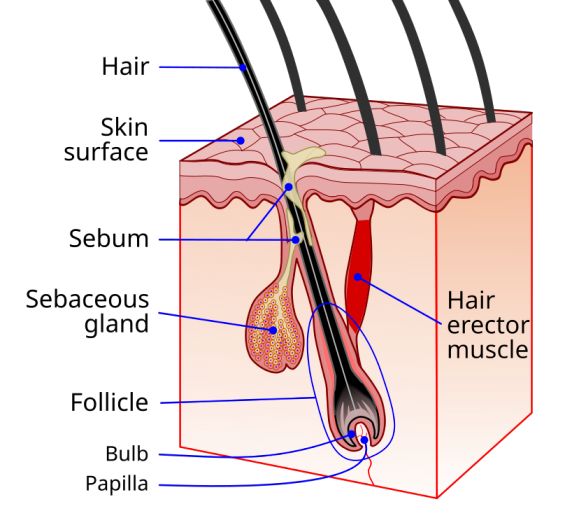
APM is a small band of muscle that connects the hair follicle to the skin (it’s the one that causes goosebumps). Researchers propose that permanent baldness in androgenetic alopecia occurs because hair follicles lose attachment to this muscle.
So, if the hair has miniaturized but it maintains contact with the arrector pili muscle, the hair loss will be reversible. And this is exactly what’s believed to reverse the miniaturization process in alopecia areata.
In addition to the above factors, miniaturization also occurs due to ageing. According to a study published in Nature Aging, with age, the adhesiveness of the hair follicle stem cells decreases.
As a result, these cells escape from the bulge of the hair follicle, which results in their death. And without these cells, it’s not possible for new hair to grow.
Therefore, essentially, hair miniaturization occurs due to a combination of factors, which include: hormones, genetics, ageing, and health problems. It can also be exacerbated by external factors, such as taking steroids.
What Are The Signs and Symptoms of Hair Miniaturization?
If your hair is miniaturizing, you might notice the following signs:
- Hair is losing colour.
- Hair is becoming finer and wispier.
- Hair is becoming sparse.
- Scalp is becoming more visible.
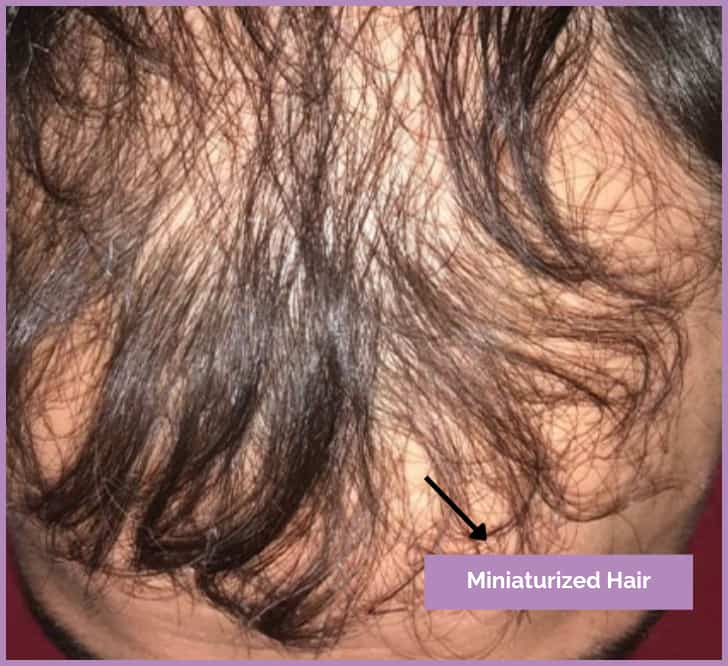
A closer look also reveals a decrease in the number of hairs in each hair follicle. For instance, a healthy hair follicle contains around 2-3 strands of hair. With miniaturization, this number goes down to 1 hair per follicle until there is none left.
Keep in mind that miniaturization doesn’t affect all the hair in a follicular unit at once. It occurs at varying rates. So, at any time, within a follicular unit, a few hair strands might be miniaturized.
However, there might be others that are still healthy. This “hair diameter diversity” – the research on which is published in the Archives of Dermatology – is helpful with the diagnosis of androgenetic alopecia.
Other than that, the distance between each follicular unit on the scalp also increases (which is normally 1 mm). And that’s what makes the hair look sparse, with the scalp visible.
The thickness of each hair shaft also decreases, and in general, its quality becomes poor.
These symptoms can vary, however, depending on the cause of miniaturization.
Can Hair Miniaturization Be Reversed?
If miniaturization is occurring due to androgenetic alopecia, it’s irreversible. However, in the case of alopecia areata, it’s usually fully reversible.
In any case, early treatment is important to slow down hair loss. If you’ve already experienced significant thinning and baldness, it can be very difficult to have good hair density again (without surgery).
How Long Does Hair Follicle Miniaturization Last?
According to research published in the Journal of the American Academy of Dermatology, hair miniaturization usually takes place within 6 to 12 months.
However, there can be huge variations in this. For instance, men with androgenetic alopecia can start losing and miniaturizing their hair as early as their teenage years. Usually, however, the incidence increases with age.
Women, however, usually develop androgenetic alopecia after menopause, which occurs between the ages of 40 and 50. Even then, there’s no saying how quickly their hair will miniaturize.
How Do You Treat Miniaturized Hair?
Among the non-surgical options, minoxidil and finasteride are considered the most effective for hair miniaturization. However, according to research published in Experimental Dermatology, minoxidil, finasteride, or any other drug cannot actually reverse terminal hair miniaturization.
Finasteride works by blocking the enzyme that converts testosterone to dihydrotestosterone. And how minoxidil works isn’t exactly understood, but it’s believed that it increases the duration of the anagen (growing) phase and improves blood flow to the scalp.
Still, keep in mind that most of the treatments either prevent or slow down hair loss or improve hair thickness. So, the total number of hair doesn’t increase.
Other than that, laser hair growth may be able to stimulate your hair follicles. However, the results are not guaranteed.
You can also try platelet-rich plasma (PRP) injections to promote the growth of new hair. But these treatments won’t reverse miniaturization.
Do Transplanted Hairs Miniaturize?
A hair transplant is considered another treatment option for hair miniaturization and baldness. It doesn’t cure the problem, but it takes care of it by making use of DHT-resistant hair follicles.
It should be noted that hair miniaturization on the scalp only occurs on the crown, top, and front. Only in those regions the hair follicles are sensitive to dihydrotestosterone.
However, the same does not apply to the hair in the back and sides. That’s because those hair follicles have a genetic resistance to DHT (the reason for this is not known).
Even when these follicles are moved to the bald areas, they remain DHT-resistant (donor dominance). So, transplanted hair doesn’t miniaturize or fall off permanently.
Sometimes, however, miniaturization can extend all the way to the back of the head. It’s more common in women who experience diffuse hair loss and don’t have a stable donor area. If this happens, you won’t be able to have hair transplant surgery.
And you should also keep in mind that there’s no clear demarcation of DHT-resistant follicles on the scalp. There’s a “safe donor area” from where surgeons usually extract hair grafts. Still, there is no way to predict whether the donor hair will stay stable forever and not shrink.
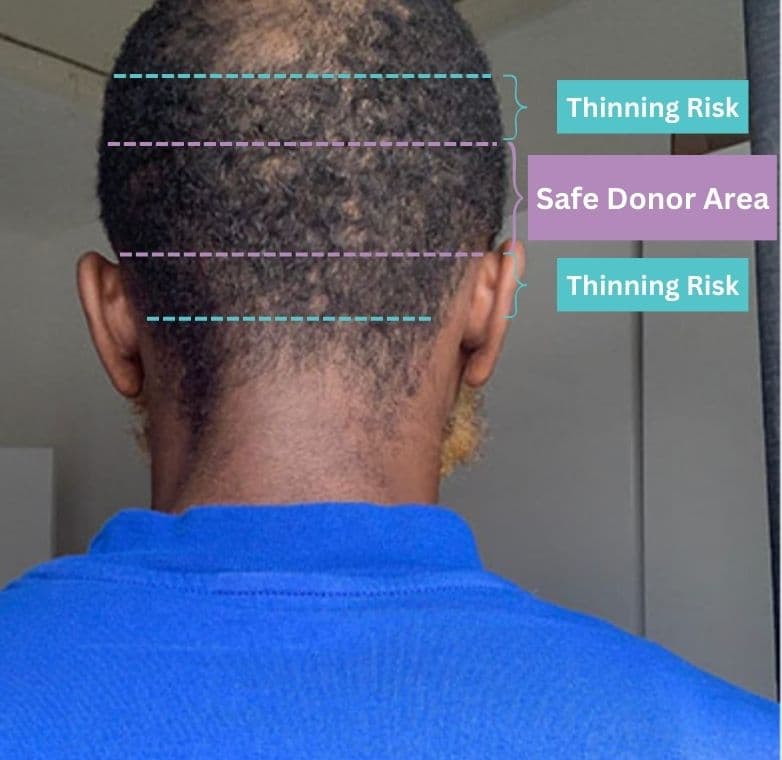
How Is Hair Miniaturization Diagnosed?
A scalp trichoscopy is usually done to see if the hair is actually miniaturizing. It involves the use of a small handheld device that shows the close-up of the follicles on the scalp.
Having a lot of fine vellus hair with follicular groups all spaced out is an indication of miniaturization due to androgenetic alopecia. However, for an accurate diagnosis, the doctor will likely ask about your family history, general health, diet, lifestyle, and any active medication/treatment that you’re on.
Any pattern of hair loss will also be taken into account. Norwood scale is usually used for genetic hair loss.
Other than that, a few tests might be done, such as a hair pull test, blood test, skin culture, or a biopsy.
Once you have a diagnosis, the treatment plan will be prepared accordingly. Keep in mind that hair miniaturization isn’t always permanent. For example, if you have alopecia areata, you might be prescribed corticosteroids for treatment.
Conclusion
Hair miniaturization is considered a hallmark of androgenetic alopecia. It’s not something that can always be prevented, especially if you have a genetic predisposition to it. DHT will bind to the hair follicles and result in their shrinkage.
The hair will continue to become thinner, shorter and less pigmented until it will eventually fall off. And new healthy hair will not come to replace it. As a result, you’ll end up with bald areas on your scalp.
Bear in mind, however, that miniaturization can also occur due to other factors. And not all of them are permanent and irreversible. Still, in any case, it’s important that you get early treatment. And for that, you should consult a medical professional.

